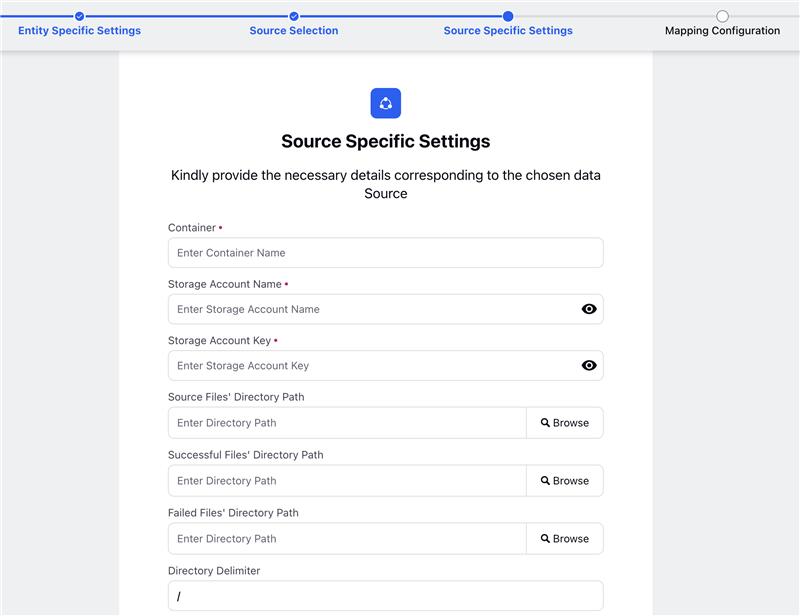Configuring an Azure Blob Connection
Updated
The Azure Blob Storage Connector enables you to seamlessly integrate Sprinklr with Azure Blob Storage. This integration can be particularly useful for managing large datasets, importing files, and ensuring seamless workflows between Sprinklr and Azure storage.
You must fill out the fields on the Entity Selection and Entity Specific Settings screens, and choose Azure Blob in the Source Selection screen. Then, you will be directed to the Source Specific Settings screen which allows you to configure Azure Blob as an entity source for importing data into your platform. Refer to the following articles for details on setting up a Data Connector and obtaining permission:
This article provides information on the Source Specific Settings required for configuring Azure Blob Storage as a data source within the platform.
Configuring Azure Blob in the Source Specific Settings screen
After choosing Azure Blob from the Source Selection screen and entering all the necessary information, you will be directed to the Source Specific Settings screen . You can set up Azure Blob as an entity source to be utilised for ingesting data into your platform in the Source Specific Settings screen.

Fields | Description |
Container | An Azure container is a logical grouping within an Azure Blob Storage account that holds blobs (files or data). It functions like a folder in a file system but exists in the cloud. Containers allow for organizing and securing blobs using access control and authentication. |
Storage Account Name | The storage account name is a unique identifier for your Azure Storage account. It is used in the URL to access the account and its resources (For example, https://mystorageaccount.blob.core.windows.net). |
Storage Account Key | The storage account key is a secure authentication credential used to access Azure Storage services. Each storage account has primary and secondary key for redundancy. These keys will be stored securely and not shared publicly, as they grant full access to all storage resources. You need to enter Storage account name and account key for the UDC to establish a connection. |
Source Files Directory Path | Directory refers to a logical structure in the azure container that is used to organize and manage files. Sprinklr allows you to specify a directory within your azure container where the customer has uploaded the files to be ingested into Sprinklr. Notes:
|
Successful Files Directory Path | This is the directory path where files that are successfully ingested during the transfer process will be moved. When this path is specified, files that are processed without errors will be relocated from the Source Files Directory to this location.
|
Failed Files Directory Path | This is the directory path where files that fail to ingest during the transfer process will be moved. When this path is specified, any file that encounters errors during processing will be relocated from the Source Files Directory to this location.
|